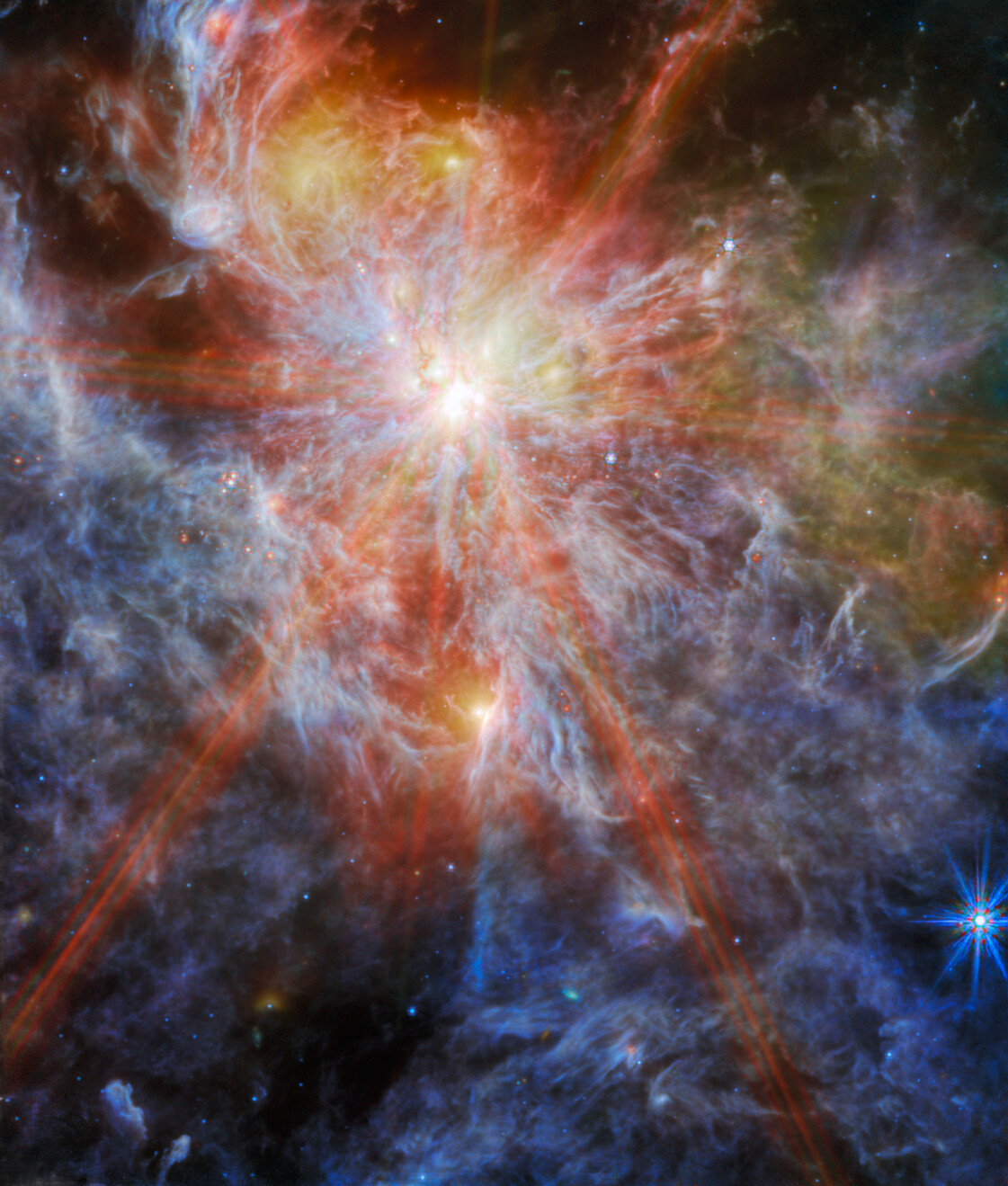Astronomers working with the James Webb Space Telescope (JWST) have released an impressive new image. It demonstrates a stellar maternity hospital in the Large Magellanic Cloud, a satellite galaxy of our Milky Way.

The target of the JWST was an object known by the designation N79. It is a massive star-forming complex with a length of 1,630 light-years. In fact, N79 is a younger version of the famous Tarantula Nebula, in the depths of which stars are also actively forming. Studies show that over the past half a million years, the efficiency of star formation in N79 has exceeded that in the Tarantula Nebula by two times.
N79 consists of three giant clouds of atomic hydrogen. JWST photographed one of them. The image is dominated by one of the newborn stars, from which diffraction rays extend. This optical effect is related to the design features of the telescope’s primary mirror, which consists of 18 hexagonal segments. Diffraction rays in JWST images occur only when shooting very bright, point-like objects, where all the light comes from the same place. Most galaxies are darker and occupy a larger area in the sky than a single star, and therefore do not have such a pattern.
Glowing gas and dust can also be seen on longer wavelengths of light captured by the MIRI camera installed on the JWST. This is because light at shorter wavelengths is absorbed or scattered by dust grains in the nebula, while the average infrared radiation is able to break out.
Such areas of star formation are of great interest to astronomers. The fact is that their chemical composition is similar to the giant regions of star formation that existed when the universe was only a few billion years old. At the same time, the star-forming regions in the Milky Way have a different chemical composition and produce stars at a much lower rate. Therefore, N79 is the closest natural laboratory to us, allowing us to reveal the secrets of star formation in the early Universe.
Earlier we talked about the fact that the Small Magellanic Cloud might actually consist of two galaxies.
According to https://esawebb.org
Follow us on Twitter to get the most interesting space news in time
https://twitter.com/ust_magazine


